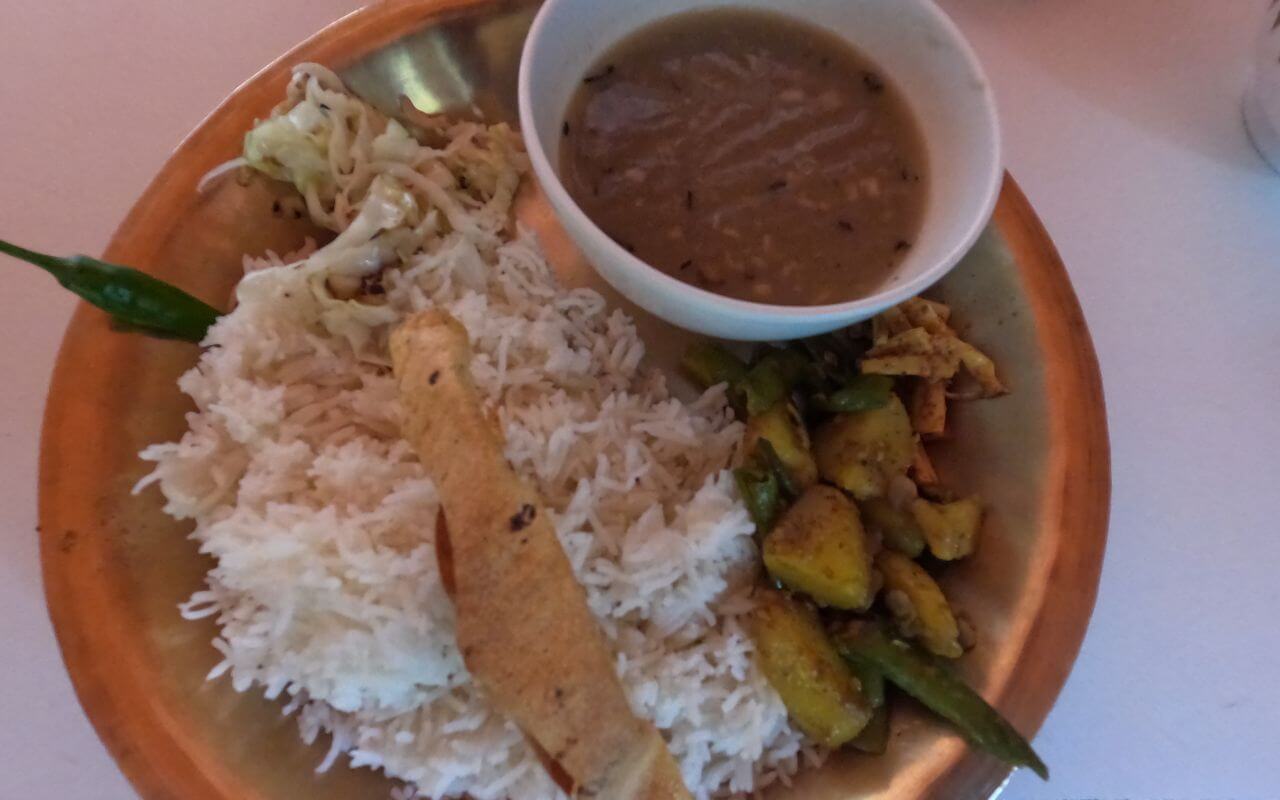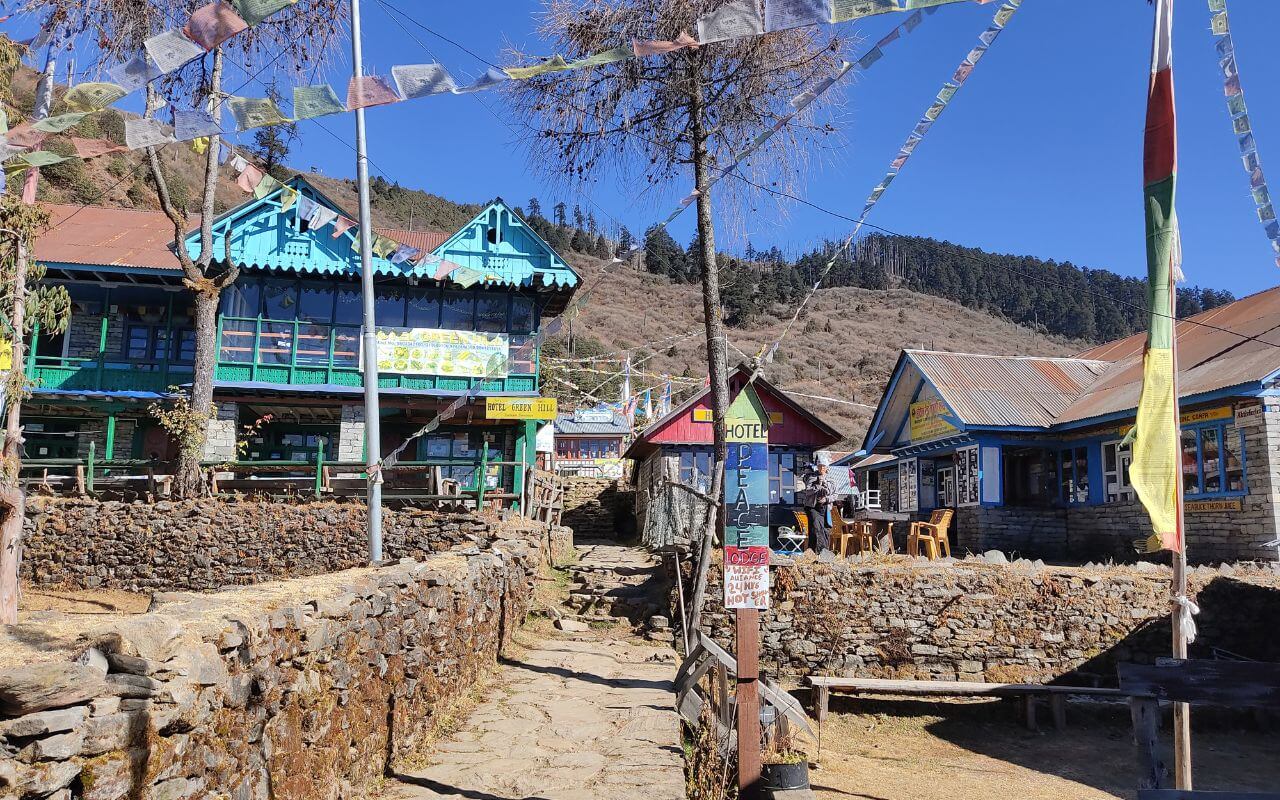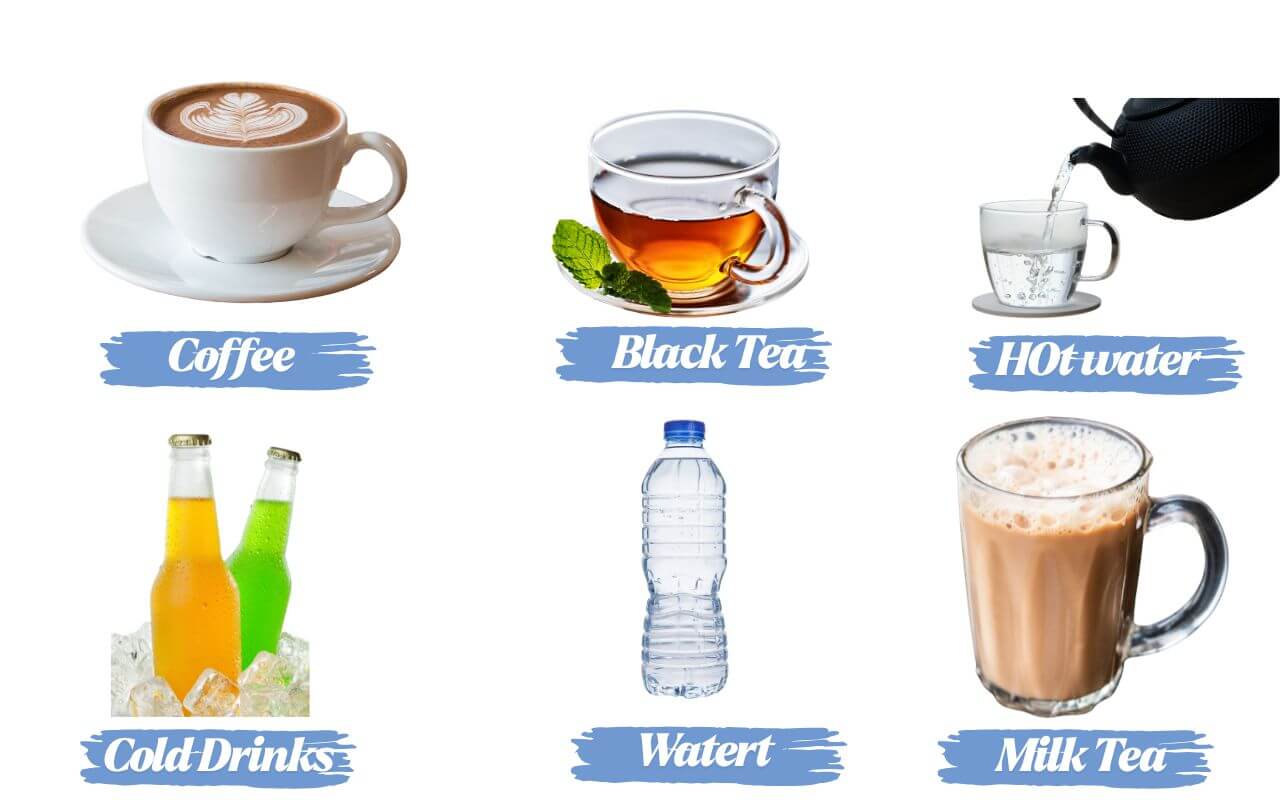On the Gosaikunda trek, you will find simple, filling meals like dal bhat and tea at teahouses, but food gets pricier higher up. Expect to spend around NPR 2,000-2,500 daily and bring your own snacks for extra fuel. Just eat well, stay hydrated, and enjoy the journey!
Food Option During Gosaikunda Trek
Table of Contents
Introduction
The Gossikunda Trek is not just a visual feat; your belly’s in for an adventure too! Food matters big time on this trail because you will be burning serious calories and need proper fuel to avoid altitude fatigue. In this blog, we will dive into what meals you can expect, what snacks to pack, and how much you will spend on food.
So if you are planning your trek and wondering what to eat on the Gosaikunda trek, read on for the full scoop. Teahouses along the trail mostly serve the classic Nepali dal bhat, along with options like veg fried rice, instant noodles, thukpa, momos, and pasta.
Breakfasts usually include porridge, Tibetan bread or chapati, eggs, and pancakes to kickstart your day. You will find both vegetarian and non-veg choices, though meat gets pricier and scarcer as you ascend. Altitude affects not just your lungs but also the menu; expect simpler meals the higher you go.
What foods are available during the Gosaikunda Trek?
Teahouses along the trail mostly serve the classic Nepali dal bhat, along with options like veg fried rice, instant noodles, thukpa, momos, and pasta. Breakfasts usually include porridge, Tibetan bread or chapati, eggs, and pancakes to kickstart your day.
You will find both vegetarian and non-vegetarian choices for food options, but meat becomes more expensive and harder to find as you go higher. Altitude affects not just your lungs but also the menu; expect simpler meals the higher you go.

Where You Eat: Teahouses and Lodges
Teahouses are cozy local lodges where trekkers eat and sleep, and they’re the heart of the food scene on this trail. Meals are usually made fresh to order in shared dining rooms with basic but warm vibes and decent hygiene standards.
You will need to order early, especially dinner, since everything is cooked from scratch and might take a while. Teahouses are where the magic happens: simple food, shared stories, and belly laughs over a hot plate of dal bhat.

Typical Food Prices on the Trail
As you go higher on the Gosaikunda trek, expect the prices to climb with the altitude, basic supplies, and demand vibes, you know? A typical teahouse breakfast, like pancakes or porridge, costs around NPR 500-700, while lunch and dinner (dal, bhat, or noodles) range from NPR 700-1000+, depending on how remote the spot is.
On average, most trekkers spend about NPR 2,000 - 3,000 per day on food alone, so it's smart to carry enough cash. There are zero ATMs after Dhunche. Knowing the Gosaikunda trek food cost in advance helps you budget better and avoid getting hangry at high altitudes.
Snacks to Carry with You
While food on the Gosaikunda trek is comforting and warm, it’s not always enough to keep your energy high during those long climbs. Carrying snacks is very crucial. Pack smart with energy bars, dry fruits, chocolates, and nuts, especially things that won't melt or crumble easily in your pack.
Since teahouses don't always stock reliable snacks (or charge extra for them), it’s way better to stock up in Kathmandu or Dhunche before you hit the trail. Plus, carrying your own best snacks for the Gosaikunda trek means fewer hunger emergencies and more hiking bliss.
Water and Drinks
Staying hydrated is key, and luckily, there are several options for safe drinking water on the Gosaikunda trek, such as boiled water from teahouses, bottled water, or using filter tablets and Lifestraws. Bottled water can cost NPT 100-300 per liter, depending on the altitude, so bringing your own purifier helps cut down the Gosaikunda trek food cost overall.
For a hot drink, you will find plenty of tea, instant coffee, and soft drinks along the way, usually priced between NPR 150-400. Avoid alcohol on the trail; it messes with your hydration, increases the risk of altitude sickness, and isn’t worth the hangover when you are 4000 meters up!

Food Safety and Health Tips
When it comes to food on the Gosaikunda trek, always stick to fresh, cooked, and hot meals; this helps avoid any tummy trouble in the middle of nowhere. Familiar dishes like dal bhat on the Gosaikunda trek are usually the safest bet, packed with energy and nutrients to keep you going.
Hydration is crucial, but so is eating enough calories. Trekking burns a lot, so don't skip meals or snacks. Keeping your energy up with regular teahouse meals on the Gosaikunda trek is just as important as your boots or backpack. That’s why in the ultimate packing list for the Gosaikunda Trek, it’s essential to include high-energy snacks and hydration solutions to keep you fueled throughout the journey.
Special Diets: Vegetarian, Vegan & Gluten-Free
If you are vegetarian or vegan, good news, teahouse meals on the Gosaikunda trek often include veggie dal bhat, fried rice, or veg noodles, and they totally get the no meat life. Just let the kitchen know your preferences early and clearly, and they will usually be happy to accommodate dietary needs.
That said, if you are gluten-free or need more specific snacks, it’s smart to bring your own food from Kathmandu or Dhunche, just in case. Planning ahead with the best snacks for the Gosaikunda trek means no surprises and no empty stomachs at high altitude.
Final Thoughts
Overall, the food on the Gosaikunda trek is hearty, simple, and built to fuel your adventure, think warm dal bhat, comforting soups, and filling pancakes that hit the spot after long climbs. While it's not gourmet dining, every teahouse meal feels like a mini reward and keeps you energized for the next leg of the trail.
Good nutrition during trekking is a game-changer, so eat enough, hydrate often, and don’t skip on the snacks you packed! With the right mix of teahouse meals, smart snacking, and planning for Gosaikunda trek meals prices, you will enjoy the journey a whole lot more with both body and soul.

.webp)

.webp)
.webp)
.webp)